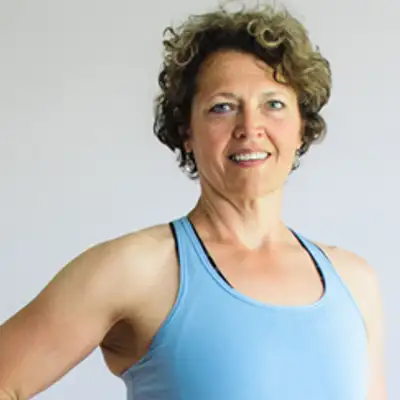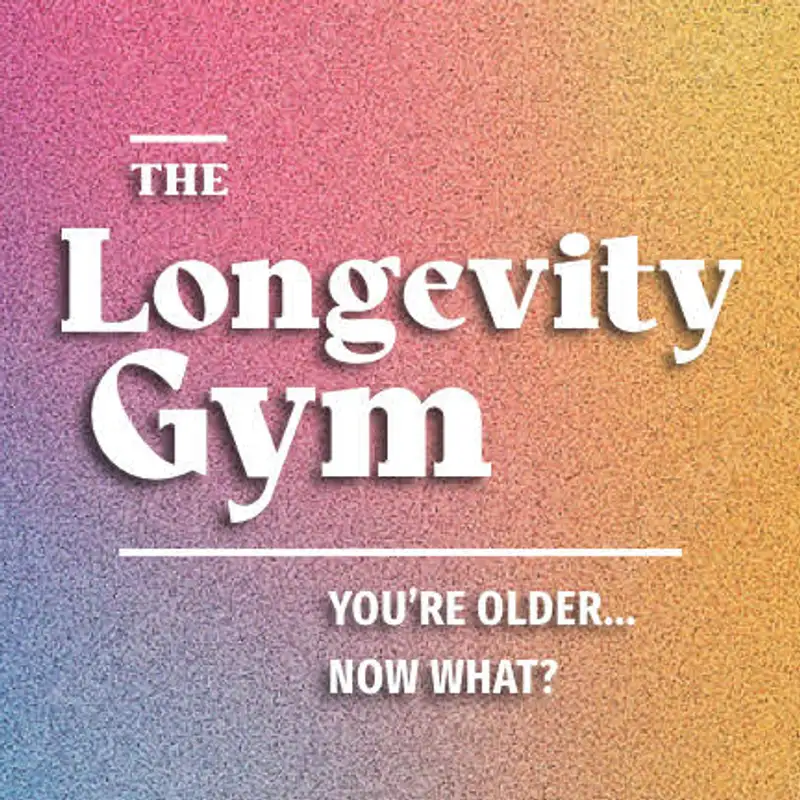How to age as slowly as possible - part two
Download MP3Pam Strand (00:02):
Welcome to the Longevity Gym. Hello, my name is Pam Strand and I am your podcast host. The Longevity Gym is about living longer, stronger, and better, and our pursuit to do that can be helped by understanding what is happening in the body as it ages and by learning how we can support that process to make sure it happens as slowly as possible, and maybe even help it go in reverse. Fortunately for US, science is producing research that is giving us answers on what is happening and what solutions are possible. Understanding biological aging is important because it is the most common underlying condition to many chronic diseases such as cardiovascular disease, cancers, metabolic diseases like type two diabetes and neurological diseases and disorders. In the previous episode of the Longevity Gym, I began the conversation of how we can use our lifestyle choices to slow and even reverse biological aging.
(01:05):
In that episode, episode seven, I discussed the findings of a scientific research study published in 2013. This study is the most widely accepted theory of aging. The study presented nine hallmarks of aging or markers of aging. These nine hallmarks were then grouped into three categories. In episode seven, I discussed the first group, the primary hallmarks of aging, which outlined the underlying causes of age-related cellular damage. In today's episode, I want to continue that conversation by discussing the second group of hallmarks. They are titled The Antagonistic Hallmarks. In the World of the body, antagonistic means something that happens in response to something else, so the antagonistic hallmarks describe the breakdown that happens in the body's mechanisms that respond to age-related cellular damage breakdown happens in three particular ways. The pathways which controlled metabolism become deregulated, the energy production part of our cells becomes dysfunctional. The cells which are no longer supporting the body accumulate rather than being cleared and or recycled. Let's look at the first one. The pathways which control our metabolism pathways are a series of interconnected steps that cells follow to carry out specific functions in the body. Research or the research that we're talking about points to the breakdown in parts of our metabolism that can control how cells and tissues grow, how they are repaired, and then recycled when they become either damaged beyond repair or have reached the end of their lifecycle. Research also
(02:59):
To the breakdown in the processes that create the energy needed by ourselves to do their work. Things like insulin signaling, glucose uptake, DNA and tissue repair are impacted. This contributes to chronic inflammation in the body and we can also end up having more growth than we need in our cells and tissues and end up with an unhealthy accumulation of cells that are no longer working or damage Beyond repair breakdown in these pathways that we're talking about can lead to disorders in our metabolism and tissues. There is a higher risk of type two diabetes, obesity, cancer, and neurological disorders like Alzheimer's and Parkinson's disease. There's also a higher risk of cardiovascular diseases and immune system dysfunction.
(03:56):
The second area of breakdown occurs with the mitochondria in our cells. Mitochondria are the small organisms within our cells whose primary role is to manufacture energy. As mitochondria age, they lose their ability to provide cellular energy. As a result, they release reactive oxygen species, AKA free radicals, which harm our cells and lead to a pre inflammation state in the body, and a buildup of dysfunctional cells, which is significant because it impedes the body's ability to run the systems that produce energy for us, muscle weakness and fatigue are also byproducts of dysfunctional mitochondria. Mitochondria are most vulnerable to nutrient deficiencies, some medicines, alcohol, pollutants, and toxins. The third area of breakdown described by this group of hallmarks is found in cellular senescence. Senescent cells are cells that are no longer working properly and are not supporting the tissue that they're a part of to a degree, senescent cells are protective to the body. They send signals to neighboring cells that encourage those cells to enter this senescent state too, which can be helpful when the cells stop harmful or damaged cells from dividing uncontrollably, but too many senescent cells can cause a reduction in tissue repair and an increase in chronic inflammation leading to the increased risk of cancer and the other age-related chronic diseases that I listed earlier. Cell cellular senescence can be caused by or influenced by DNA damage and telomere shortening. These two are primary hallmarks
(05:56):
Of aging. Cancer treatments can also be a cause of cellular senescence. Lifestyle choices can be and are hugely beneficial in supporting the body with respect to these antagonistic hallmarks of aging. Research shows once again that intermittent fasting is one of the best supporting lifestyle choices. The metabolic pathways that are breaking down in these antagonistic hallmarks are called nutrient sensing pathways. Some take place when nutrients are available in the body as they are when we are in what is called a fed state, meaning we've eaten something recently. Others take place when nutrients are scarce or when we are in a fasted state. Intermittent fasting is a means in which to support both types of nutrient sensing pathways. Remember, intermittent fasting does not need to be extreme In order to be helpful, a basic and standard 12 hour window is effective. An example of a 12 hour fasting schedule is your first meal at 6:00 AM like having breakfast then and the last meal or your dinner at 6:00 PM I explain intermittent fasting in more detail In episode seven.
(07:19):
Another nutritional strategy that literature says is helpful is eating foods high in sirtuins. Sirtuins are a family of proteins that support metabolism and DNA repair. There are proteins created within our cells, but consuming foods that contain this protein is a way to support the body. Sirtuin rich foods include foods such as chicken and Turkey and fish, peanuts, mushrooms, red grapes, red wine, berries, dark chocolate. They also include things like apples and onions, citrus fruits, leafy green vegetables, and green tea. This list of foods is not meant as a prescription of a specific diet. You cannot create an optimal diet on these foods alone. This list contains only suggestions of what evidence is finding could be helpful to your body. Literature also suggests being sure you are getting essential nutrients such as vitamins B one and B two coq 10, magnesium, niacin, glutathione, and carnitine, and always take care to eat foods that you know are safe and healthy for you and avoid those which are not. Exercise remains high in the list as ways to slow the aging process and is on the list for
(08:54):
Age-related breakdowns that I've been discussing in this episode. Exercise helps to improve the body's insulin sensitivity and glucose or blood sugar utilization. It also improves our overall metabolism. Hi or high intensity interval training exercise is known to stimulate the growth and function of mitochondria. A successful exercise program contains varied intensities of exercise intensity and type of exercise. Should always honor any limitations due to health or orthopedic issues. If you are new to exercise, please be sure to check in with your doctor before starting a new exercise program. Stress reduction continues to be important as well as a way to support the slowing of the aging process in the body. In the case of these antagonistic hallmarks, high stress levels can trigger inflammation and lead to more imbalances in metabolism related to cellular and tissue growth. And finally, high quality sleep is important to supporting the body's metabolism.
(10:09):
I have one last note here on ways to support the body. I have chosen to discuss only the lifestyle choices in this podcast series as that aligns with my credentials and my expertise. There is a field of drug therapy that is being studied and is being used to slow aging and increased longevity. That field is called Senolytics. I mention in it in the spirit of being as complete as I can in sharing the story about longevity, but medicine and supplements are not my area of expertise and my approach here is to refer people to their doctors for more information about this class of medicines and supplements.
(10:50):
The next episode of The Longevity Gym will cover the third and final part of this series on slowing the aging process. I invite you to tune in. I also invite you to email me with any questions you may have. I'd also love to hear about your wins. My email address is pam@strandfitnessonline.com. It's also listed in the show notes below, and if you're not on my email list, please consider signing up. I send emails about every two weeks highlighting recent podcast episodes. Emails will come more frequently when I have news about offerings that I'm launching. There's a signup form below, or you can visit my website, strand fitness online.com. There's a signup form at the bottom of my homepage. Thanks for tuning in and I hope to see you soon.
Creators and Guests


